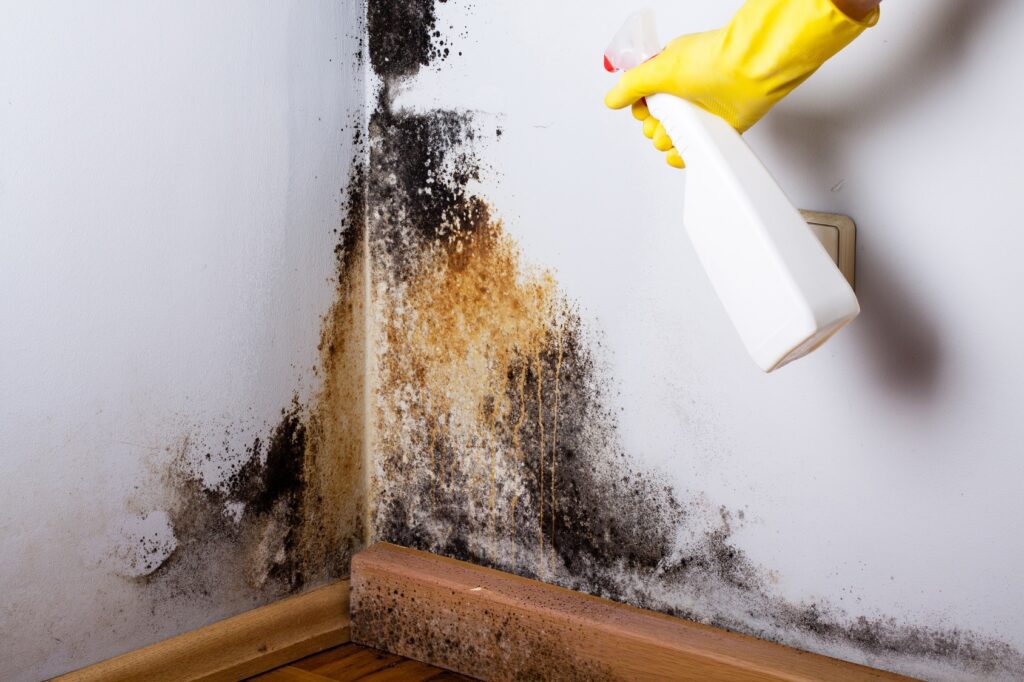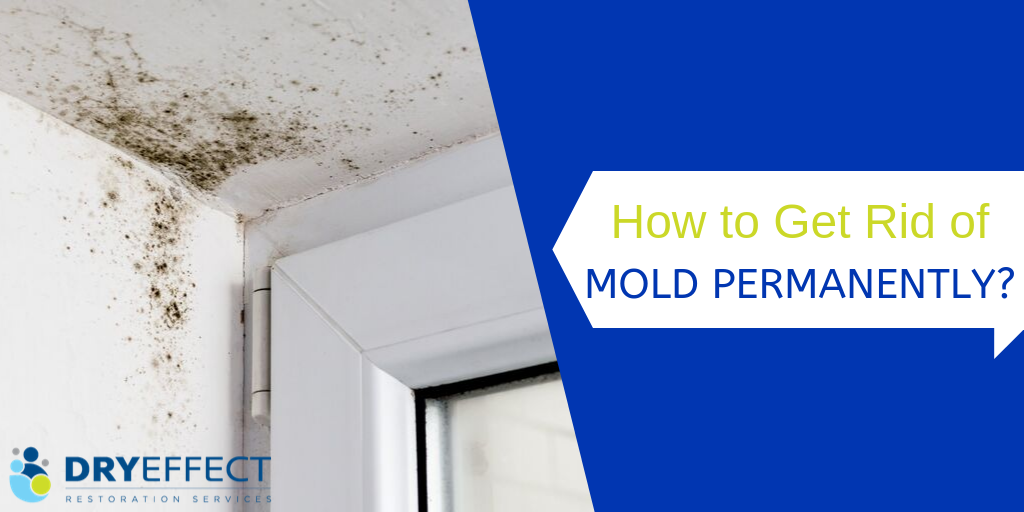In this article, you will learn some effective tips on how to prevent mold from coming back after removal in Houston. We will discuss the importance of fixing any moisture issues, properly ventilating your home, and maintaining a clean and dry environment. You will also discover the benefits of using mold-resistant materials and implementing regular inspections. By following these preventive measures, you can ensure that mold does not return and maintain a healthy living space.

Understanding Mold
What is mold?
Mold is a type of fungus that can grow both indoors and outdoors. It thrives in damp and humid environments and spreads through the release of spores. Mold can appear as black, green, or white patches on surfaces and often has a musty odor.
Why does mold grow?
Mold requires moisture, warmth, and organic material to grow. In homes, mold commonly grows in areas with excessive humidity, poor ventilation, and water damage. It can develop on various surfaces including walls, ceilings, carpets, and furniture.
Different types of mold
There are many types of mold that can be found in homes. Some common types include:
- Stachybotrys chartarum (black mold): Known for its black or dark green appearance, black mold is often associated with water damage and can produce toxins harmful to human health.
- Aspergillus: This type of mold is commonly found on food and in air conditioning systems. It can cause respiratory problems and allergic reactions.
- Penicillium: Often found on wallpaper, fabrics, and water-damaged materials, penicillium mold can produce mycotoxins that may cause health issues.
- Cladosporium: This type of mold is usually found on damp materials such as carpets, textiles, and wood. It can trigger allergies and asthma symptoms.
Importance of Mold Removal
Health risks of mold
Exposure to mold can pose various health risks. Mold spores and mycotoxins released by mold can lead to respiratory problems, allergies, and other health issues. Individuals with compromised immune systems, asthma, or allergies are particularly susceptible to the negative effects of mold exposure.
Property damage caused by mold
Besides the health risks, mold can cause significant damage to your property. It can weaken structures, stain surfaces, and destroy belongings such as furniture, carpets, and clothing. Mold growth can also reduce the value of your property and make it less appealing to potential buyers.

Effective Mold Removal Process
Identifying the source of mold
Before proceeding with mold removal, it’s crucial to identify and address the source of the mold growth. This may involve fixing leaks, improving ventilation, or addressing any water damage in your home.
Containment and removing contaminated materials
Once the source has been addressed, it is essential to contain the affected area to prevent the spread of mold spores. This can be done by sealing off vents, using plastic sheets, and employing negative air pressure systems. Removing and disposing of contaminated materials, such as drywall or carpets, may also be necessary.
Proper cleaning and disinfection
After removing the contaminated materials, thorough cleaning and disinfection are necessary to eliminate any remaining mold spores. This may involve scrubbing surfaces with a bleach solution, using specialized mold removal products, and ensuring proper ventilation during the cleaning process.
Factors Contributing to Mold Growth
Excessive moisture
Moisture is a key factor in mold growth. High humidity levels, plumbing leaks, roof leaks, and condensation issues can create a damp environment ideal for mold growth. It is important to address these conditions promptly to prevent mold from returning.
Poor ventilation
Inadequate ventilation can trap moisture and prevent proper airflow, creating an environment conducive to mold growth. Ensuring proper ventilation in areas such as bathrooms, kitchens, and basements can help prevent mold buildup.
Condensation issues
Condensation occurs when warm, humid air comes into contact with cold surfaces. Areas prone to condensation, such as windows, pipes, and walls, provide ideal conditions for mold growth. Proper insulation and addressing condensation issues can help prevent mold from recurring.

Preventing Mold Regrowth
Maintaining proper indoor humidity levels
Keeping indoor humidity levels below 50% can reduce the likelihood of mold growth. Using dehumidifiers and air conditioners in humid areas can help regulate moisture levels. Additionally, using exhaust fans during and after activities that generate moisture, such as showering or cooking, can help prevent mold.
Regular inspections
Regularly inspecting your home for any signs of moisture or mold growth is crucial. Pay close attention to areas prone to water damage, such as basements, crawlspaces, and attics. Early detection and prompt action can prevent mold from spreading and recurring.
Addressing leaks and water damage promptly
Any leaks or water damage should be addressed promptly to prevent mold growth. Fixing leaky pipes, repairing roof damage, and ensuring proper drainage are essential for preventing moisture buildup and subsequent mold growth.
Effective Moisture Control Strategies
Proper ventilation
Ensuring adequate ventilation throughout your home is crucial in preventing moisture buildup. Installing exhaust fans in bathrooms and kitchens, opening windows when weather permits, and using ventilation systems can help improve airflow and reduce humidity levels.
Effective use of dehumidifiers
Dehumidifiers are valuable tools in controlling moisture levels in areas that tend to be damp, such as basements and crawlspaces. Using dehumidifiers with automatic humidity controls can help maintain optimal moisture levels and prevent mold growth.
Rainwater and flood prevention measures
To prevent excessive moisture from rainwater or flooding, it is important to address any issues in your home’s exterior. This may involve cleaning gutters regularly, ensuring proper slope and drainage away from the foundation, and sealing any cracks or gaps where water could enter.

Preventive Measures for Mold in Specific Areas
Bathrooms and kitchens
In bathrooms and kitchens, where moisture levels are often high, it is essential to have proper ventilation and moisture-resistant materials. Installing exhaust fans, using mold-resistant paint and caulking, and regularly cleaning and drying surfaces can help prevent mold growth.
Basements and crawlspaces
Basements and crawlspaces are prone to moisture problems due to their proximity to the ground. Proper insulation, ventilation, and waterproofing measures can help prevent moisture buildup and subsequent mold growth. It is important to regularly inspect these areas for any signs of leaks or water damage.
Attics and roofs
Proper insulation and ventilation in attics can help prevent condensation and subsequent mold growth. Additionally, regular roof inspections and maintenance can help identify and address any potential sources of water intrusion, reducing the risk of mold growth.
Promoting Air Circulation and Sunlight
Opening windows and doors
Allowing fresh air to circulate through your home can help reduce humidity levels and prevent the buildup of moisture. Opening windows and using door fans can aid in promoting airflow and preventing mold growth.
Using fans and air purifiers
Fans can help improve air circulation, reducing moisture and mold growth. Air purifiers with HEPA filters can remove mold spores from the air, improving indoor air quality and reducing the risk of mold-related health issues.
Maximizing natural light exposure
Sunlight can help inhibit mold growth due to its natural drying properties. It is beneficial to keep curtains open during the day and ensure that furniture or other objects do not obstruct the flow of natural light into your home.

Maintaining Proper Ventilation Systems
Regular maintenance of HVAC systems
Regular maintenance of your heating, ventilation, and air conditioning (HVAC) systems is important for preventing moisture buildup and mold growth. This includes cleaning or replacing filters, checking for leaks, and ensuring adequate airflow.
Cleaning and replacing filters
Dirty air filters can hinder airflow and contribute to moisture buildup. Regularly cleaning or replacing filters can help maintain proper ventilation and prevent conditions favorable for mold growth.
Ensuring adequate air flow
Proper air circulation throughout your home is essential in preventing mold growth. Ensure that air vents are not blocked by furniture or other objects, and consider using ceiling fans to improve airflow in rooms.
Conclusion
Summary of preventive measures
Preventing mold from coming back after removal requires addressing the underlying causes of mold growth. This includes maintaining proper indoor humidity levels, regular inspections, and prompt action to address leaks and water damage. Effective moisture control strategies and preventive measures in specific areas of your home, along with promoting air circulation and sunlight exposure, can further enhance mold prevention efforts.
Benefits of proactive mold prevention
By proactively preventing mold growth, you can protect your health, preserve your property, and save money on costly repairs. Regular maintenance, vigilance, and implementing preventive measures can significantly reduce the risk of mold recurrence and ensure a healthy and mold-free living environment in Houston.